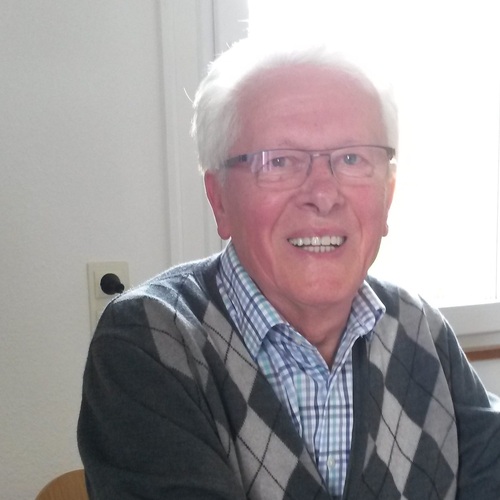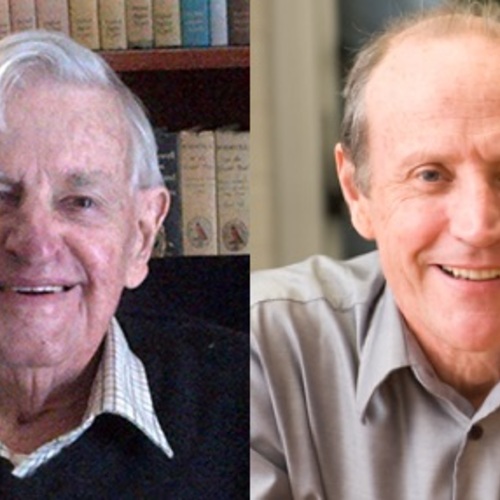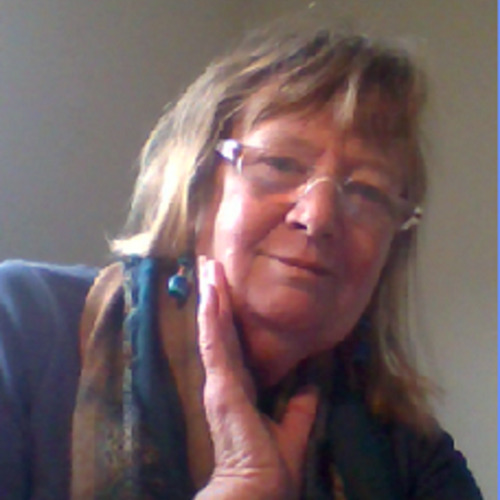Computation and the Humanities interviews
- Title
-
Computation and the Humanities interviews
- Description
- mp3 formats of interviews
- Creator
-
Julianne Nyhan and respective authors
- Rights
-
Interview audio files are made available under a creative commons licence “by-nc-nd” with the following characteristics:
• by: the content must be attributed to me and the interviewer.
• non-commercial: commercial use of the content is not allowed.
• no derivative works: the material is to be allocated in its original form and may not be
edited.
See: http://creativecommons.org/licenses/by-ncnd/
3.0/ and http://creativecommons.org/licenses/by-nc-nd/3.0/legalcode. - Relation
- Transcripts of interviews are published here: http://www.springer.com/it/book/9783319201696
- Language
- English
- Type
- Oral history interviews about the history of Digital Humanities
- Subject
- Audio files of the interviews transcribed in Julianne Nyhan and Andrew Flinn 2016. Computation and the Humanities: towards an oral history of Digital Humanities. Springer.
- Date
- Audio files published in 2017
- encodingFormat
- mp3
- Coverage
-
c. 1949-present
Items
View as:
I would think of myself as sitting inside the computer: Mary Dee Harris and Julianne Nyhan
This oral history interview was conducted 3 June 2015 via skype. In it Mary Dee Harris recalls her early encounters with computing, including her work at the Jet Propulsion Lab in Pasadena, California. Despite these early encounters with computing she had planned to leave it behind when she returned to graduate school to pursue a PhD; however, the discovery of c.200 pages of a Dylan Thomas manuscript prompted her to rethink this. Her graduate study was based in the English Department of the University of Texas at Austin, which did not have an account with the Computer Centre, and so it was necessary for her to apply for a graduate student grant in order to buy computer time. Her PhD studies convince her of the merits of using computers in literary research and she hoped to convince her colleagues of this too. However, her applications for academic jobs were not successful. After working in Industry for a time she went on to secure academic positions in Computer Science at various universities. During her career she also held a number of posts in Industry and as a Consultant. In these roles she worked on a wide range of Artificial Intelligence and especially Natural Language Processing projects. Her interview is a wide-ranging one. She reflects on topics like the peripheral position of a number of those who worked in Computers and the Humanities in the 1970s and her personal reactions to some of the computing systems she used, for example, the IBM 360. She also recalls how she, as a woman, was sometimes treated in what tended to be a male-dominated sector, for example, the physics Professor who asked “So are you going to be my little girl?”
The University was still taking account of the meaning of universitas scientiarum: Wilhelm Ott and Julianne Nyhan
This oral history interview between Wilhelm Ott and Julianne Nyhan was carried out on 14 July 2015, shortly after 10am, in the offices of pagina in Tübingen. Ott was provided with the core questions in advance of the interview. He recalls that his earliest contact with computing was in 1966 when he took an introductory programming course in the Deutsches Rechenzentrum (German Computing Centre) in Darmstadt. Having become slightly bored with the exercises that attendees of the course were asked to complete he began working on programmes to aid his metrical analysis of Latin hexameters, a project he would continue to work on for the next 19 years. After completing the course in Darmstadt he approached, among others such as IBM, the Classics Department at Tübingen University to gauge their interest in his emerging expertise. Though there was no tradition in the Department of applying computing to philological problems they quickly grasped the significance and potential of such approaches. Fortunately, this happened just when the computing center, up to then part of the Institute for Mathematics, was transformed into a central service unit for the University. Drawing on initial funding from the Physics department a position was created for Ott in the Tübingen Computing Centre. His role was to pursue his Latin hexameters project and, above all, to provide specialised support for computer applications in the Humanities. In this interview Ott recalls a number of the early projects that he supported such as the concordance to the Vulgate that was undertaken by Bonifatius Fischer, along with the assistance they received from Roberto Busa when it came to lemmatisation. He also talks at length about the context in which his TUSTEP programme came about and its subsequent development. The interview strikes a slightly wistful tone as he recalls the University of Tübingen's embrace of the notion of universitas scientiarum in the 1960s and contrasts this with the rather more precarious position of the Humanities in many countries today.
Individuation is there in all the different strata: John Burrows, Hugh Craig and Willard McCarty
This oral history interview between Willard McCarty (on behalf of Julianne Nyhan), John Burrows and Hugh Craig took place on 4 June 2013 at the University of Newcastle, Australia. Harold Short was also present for much of the interview. Burrows recounts that his first encounter with computing took place in the late 1970s, via John Lambert, who was then the Director of the University of Newcastle's Computing Service. Burrows had sought Lambert out when the card-indexes of common words that he had been compiling became too difficult and too numerous to manage. Craig's first contact was in the mid-1980s, after Burrows put him in charge of a project that used a Remington word processor. At many points in the interview Burrows and Craig reflect on the substantial amount of time, and, indeed, belief, that they invested not only in the preparation of texts for analysis but also in the learning and development of new processes and techniques (often drawn from disciplines outside English Literature). Much is said about the wider social contexts of such processes: Craig, for example, reflects on the sense of possibility and purposefulness that having Burrows as a colleague helped to create for him. Indeed, he wonders whether he would have had the confidence to invest the time and effort that he did had he been elsewhere. Burrows emphasises the network of formal and informal, national and international expertise that he benefitted from, for example, John Dawson in Cambridge and Susan Hockey in Oxford. So too they reflect on the positive results that the scepticism they sometimes encountered had on their work. As central as computing has been to their research lives they emphasise that their main aim was to study literature and continuing to publish in core literature journals (in addition to Digital Humanities journals) has been an important aspect of this. Though they used techniques and models that are also used by Linguists and Statisticians their focus has remained on questioning rather than answering.
The influence of algorithmic thinking: Judy Malloy and Julianne Nyhan
This interview was carried out via skype on 11 August 2015 at 20:30 GMT. Malloy was provided with the core interview questions in advance. Here she recalls that after graduating from University she took a job as a searcher/editor for the National Union Catalog of the Library of Congress. About a year after she arrived Henriette D. Avram began work on the process of devising a way to make the library’s cataloguing information machine readable (work that would ultimately lead to the development of the MARC format (Schudel 2006)). Malloy recalls this wider context as her first encounter, of sorts, with computing technology: though she did not participate in that work it made a clear impression on her. She had learned to programme in FORTRAN in the 1960s when working as a technical librarian at the Ball Brothers Research Corporation. She had also held other technical roles at Electromagnetic Research Corp and with a contractor for the Goddard Space Flight Center, which was computerising its library around the time she worked there. She recalls that she did not use computers in her artistic work until the 1980s (when she bought an Apple II for her son). However, she had been working in an interactive, multimedia and associative mode for some time before then, as evidenced by the card catalog poetry and electronic books that she created in the 1970s and early 80s. In this interview she traces the importance of card catalogs, systems analysis and algorithmic thinking to many aspects of her work. She also reflects on why it was that the idea of combining computing and literature did not occur to her (and also was not practically feasible) until a later stage in her career. Among other topics, she reflects on the kinds of computing and computing environments that she encountered, from the reactions in the 1960s of some male engineers to the presence of a female technical librarian in the mainframe room to the thrill of discovering the community that was connected via the Whole Earth 'Lectronic Link (The WELL).




